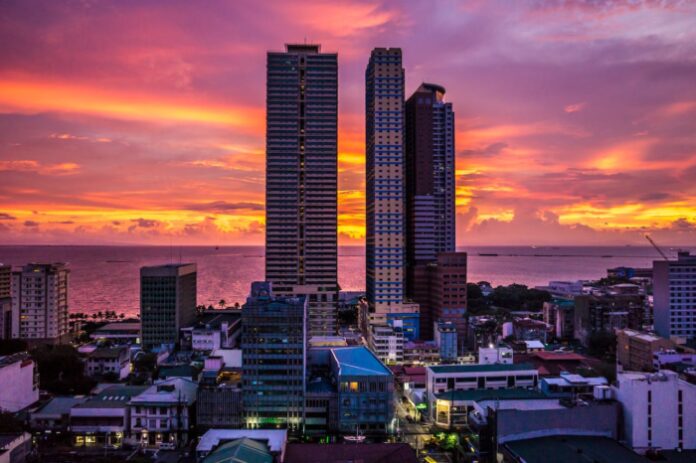The Asia-Pacific real estate market is undergoing significant transformation, adapting to new trends and expectations. As we look towards building a future in this dynamic region, it’s crucial to understand the emerging patterns that are shaping the landscape. Key among these trends is the stabilization of residential prices, the rise of branded residences, and the growing popularity of Build-to-Rent (BTR) models. These trends not only reflect changing consumer preferences but also present new opportunities for sustainable and innovative real estate development.
Market Trends and Developments in Asia-Pacific Real Estate
Market Stability: A Cornerstone for Future Development
In 2023, the Asia-Pacific residential property market experienced a notable stabilization in residential prices. This stabilization is more than just a temporary trend; it’s a signifier of a maturing market. Expected to continue into 2024, this stability provides a solid foundation for both investors and homeowners. With a more predictable market, stakeholders can make more informed decisions, free from the volatility that once characterized this region. This predictability is essential for long-term planning and investment in real estate development, signaling a healthy environment for future growth.
In the Asia-Pacific region, the residential landscape is marked by resilience. Surpassing expectations, most markets showed a smaller correction than initially forecasted and are poised for further improvement in 2024. Southeast Asia’s property market is anticipated to maintain its consistency. Manila is a standout with an expected growth of 5.9% in 2024, fueled by burgeoning fintech and startups, coupled with robust domestic and foreign investments. In contrast, Singapore is witnessing cautiousness among investors due to high prices. Bangkok and Jakarta are experiencing a sideways movement, influenced by economic growth concerns and rising interest rates. Positive trends are observed in Australia, New Zealand, and India, while Greater China presents a mixed scenario. The delayed economic recovery has dampened market sentiment in both the Chinese mainland and Hong Kong SAR.
The Rise and Appeal of Branded Residences
Another significant trend reshaping the real estate landscape in Asia is the growing popularity of branded residences. These properties, which combine the luxury of high-end hotels with the comfort of private homes, are increasingly sought after across the region. They reflect a shift in consumer preferences towards homes that offer not just a place to live but a lifestyle. This trend is particularly notable in the luxury segment, where buyers are looking for residences that provide a combination of status, comfort, and convenience. As a result, developers are increasingly focusing on creating properties that meet these new expectations, thereby driving innovation and excellence in the real estate sector.
The Asia-Pacific residential property market is seeing a growing demand for branded residences, a trend that has been building momentum over recent years. These residences, often affiliated with reputable hotel brands, offer a range of amenities that are attracting buyers.
The allure of branded residences, such as the upcoming Meyer Blue Condo, lies in their premium services and amenities, including concierge services, spa and fitness facilities, and fine dining. Their high-yield potential and effective management and maintenance are also key factors in their popularity. Branded residences represent more than just a home; they offer a lifestyle intimately connected to the brand. Investors in the Asia-Pacific region show a particular interest in these global branded residences. Register for a slot to view the Meyer Blue Showflat once it opens to public.
Emerging Living Styles: Rightsizing, Co-Living, and BTR Models
Furthermore, the concepts of rightsizing and co-living are gaining traction. Rightsizing, the practice of finding a home that appropriately fits one’s needs, often sees individuals moving to smaller or more practical spaces. This movement is particularly prominent among aging populations who are looking for more manageable living arrangements. On the other hand, co-living, which involves sharing living spaces with others to reduce costs and foster community, is becoming a popular choice among younger demographics. This trend reflects a broader societal shift towards more flexible and communal living arrangements.
The concept of “rightsizing,” which emerged during the pandemic and is fueled by increased immigration, is leading to a surge in rental demand in the Asia-Pacific region. Particularly notable in Australia, this trend involves moving into luxurious, smaller apartments.
In major cities across the Asia-Pacific region, co-living spaces are emerging, especially for young professionals and students. These shared living environments offer a flexible and cost-effective lifestyle, catering to the needs of those seeking a significant cultural shift in their living arrangements. The rising popularity of co-living spaces reflects a broader trend towards communal living and efficiency in urban areas.
Simultaneously, the Build-to-Rent (BTR) model is gaining prominence, particularly in Australia. This approach involves developers building and owning rental properties, thereby ensuring a stable, long-term income stream for both developers and investors. The BTR model is revolutionizing the real estate landscape by fostering vibrant tenant communities, characterized by exceptional service and amenities. It represents a shift towards more sustainable and community-focused real estate developments.
Conclusion
As we delve into the dynamic property trends of the Asia-Pacific region, it’s clear that the real estate market is undergoing a transformative phase. The stabilization of residential prices, the allure of branded residences, the rightsizing phenomenon, the increasing popularity of co-living spaces, and the rise of the Build-to-Rent model all point to a vibrant and evolving landscape. These trends not only reflect changing lifestyle preferences but also open up new opportunities for investors and homeowners. Understanding these multifaceted dynamics is essential for anyone looking to navigate the complex and ever-changing realm of real estate in this region.
Find a Home-Based Business to Start-Up >>> Hundreds of Business Listings.


















































This article provides a comprehensive overview of the evolving real estate landscape in the Asia-Pacific region, highlighting key trends such as market stability, branded residences, rightsizing, co-living, and the Build-to-Rent model. Interesting options for commercial property in Hong Kong can be found here: matchoffice.hk/lease/coworking/central-hong-kong. Understanding these trends is crucial for anyone involved in the region’s real estate investment, homeownership, or commercial property in Asia.